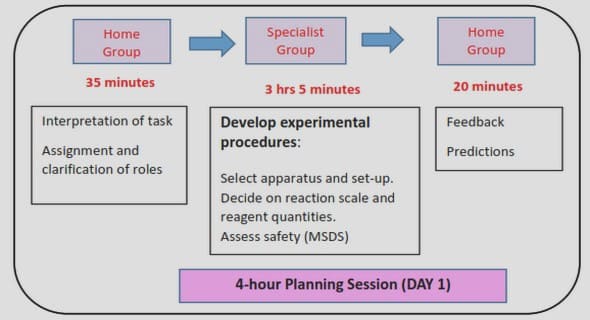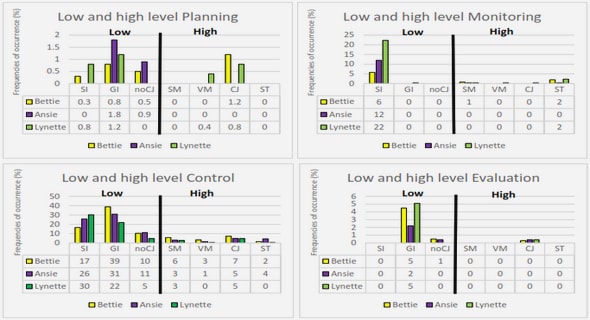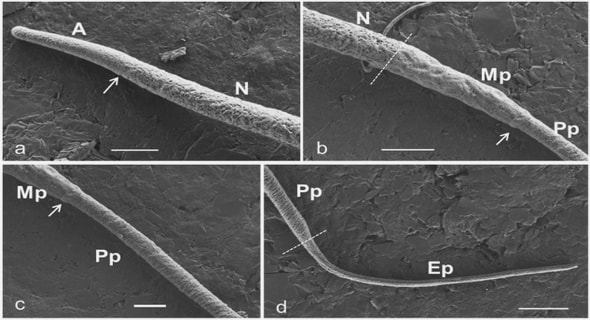Get Complete Project Material File(s) Now! »
ISM Band
The ISM radio band is radio band (a small portion of radio spectrum) which is reserved internationally for the use of radio frequency (RF) energy for the purpose of industrial, scientific and medical equipments other than communications [2]. In general, communications equipment operating in these bands must have to tolerate any interference generated by the ISM equipments and for the case of ISM device operation, users have no regulatory protection. In spite of the intention of the original allocation, the uses of these bands become very popular for short-range communication and low power communication electronics systems.
ISM Band Operation
ITU-R has defined the ISM bands in 5.138, 5.150, and 5.280 of the radio regulations [3]. Due to the national radio regulations of spectrum management, individual countries’ use of the bands designated in these sections may differ. Some communication devices which are using the ISM bands, it must tolerate any interference from ISM equipments. Normally unlicensed operations are allowed to use these bands, because the unlicensed operations are supposed to tolerate any external or internal interference from other devices. However, the ISM bands do have the licensed operations. Because of high possibilities of harmful interferences, licensed use of the ISM bands is not high. By the part 18 of the Federal Communications Commission (FCC), uses of ISM bands are being governed in USA, at the same time, part 15 contains the rules and regulations for unlicensed communication devices even though those use the ISM frequency bands [4].
According to European commission’s short range device regulations, the use of the ISM band is being governed in Europe [5]. In most of the European zones, for license-free voice communication, LPD433 band is allowed using analog frequency modulation [6].
Application
Microwave oven is one of most common examples of ISM device which operates at 2.45 GHz. Lately ISM bands have been shared with license-free communications applications for example 915 MHz and 2.450 GHz are for wireless sensor networks. 915 MHz, 2.450 GHz and 5.800 GHz are for wireless LNA and cordless phones respectively [3]. In radio frequency identification (RFID) applications such as biometric and contactless smart cards, ISM bands are being used widely [3].
Some low power remote control toys, gas powered cars and miniature aircraft use 2.4 GHz band range. Worldwide Digital Cordless Telecommunications (WDCT) is an ISM band technology which uses the 2.4 GHz radio spectrum. Wireless LAN devices use the following bands [3]:
• Bluetooth 2450 MHz band
• HIPERLAN 5800 MHz band
• IEEE 802.11/Wi-Fi 2450 MHz and 5800 MHz bands
Radio Receiver Basics
The super-heterodyne receiver is one of the most popular forms of receiver which is widely used today in a variety of applications from broadcast receivers to two way radio communications links as well as many mobile radio communications systems [1]. At the early stage of radio communication technology development, the super-heterodyne receiver offers many advantages in many applications.
In this section, a typical block diagram (figure 2-1) of wireless receiver is drawn. According to this figure, the typical functionalities will be described shortly. The basic function of receiver is to recover the transmitted baseband signal by the reversing the functions of transmitter. An important component of receiver is antenna which receives the radiated electromagnetic waves from some other sources of broad frequency ranges [1]. Then the signal passes through a band-pass filter which provides some selectivity by filtering out received signals with unwanted frequencies and passing some signals of desired frequency band. The desired signal from BPF will pass through a low-noise-amplifier (LNA). The basic function of LNA is to amplify the very weak received signal at the same time to minimize the noise power which is added to the received signals [1]. By putting a BPF in before LNA reduces the possibilities to add other interfering signals to the desired signal, this is how, the amplifier cannot be overloaded with other high power signals. The output from LNA is feed to a mixer which is used to down-convert the received radio signal to a lower frequency signal. A local oscillator (LO) is set at the level of the frequency which is near to the RF input and the output of the mixer will be relatively low and it could be filtered out by the IF band-pass filter [1]. The high gain IF amplifier raises the power level of the filtered signal thus the baseband information can be recovered without distortion [1].
Network Analysis
In this section, two-port network and S-parameter will be discussed briefly.
Two-Port Network
A two-port network is an electrical circuit which consists of four terminals to be connected with other external network or circuit [7]. It is represented by four variables such as at the input port voltage, current, and at the output port voltage, and current, [8]. Figure 2-3 shows a two-port network which has four terminals.
S-Parameter
Scattering parameters or S-parameters have significant role in RF system design. RF engineers use S-parameter to define the relationship between input-output of an electrical network in terms of incident and reflected power waves [10]. According to figure 2-2, an incident normalized power wave, and a reflected normalized power wave,
Types of Noises
Noise is an undesired random disturbance in the communication systems which can degrade the useful signal [f]. It comes from natural or man-made sources. For wireless system performance evaluation, noise is an important factor to be taken into account. Normally, noise exists in all radio frequency (RF) and microwave systems. Receiver performances can be limited by the noises effect [1]. There are several parameters such as signal-to-noise ratio; dynamic range, bit error rates and minimum detectable signal level all are directly dependent on the noise effect [1]. In the following sections, some noises of electronics devices are discussed briefly:
hermal Noise
Due to random thermal motions of electrons inside electronics devices generate some noises which are called thermal noise. Thermal noise is also called as Johnson–Nyquist noise [11]. Throughout the whole spectrum, the power spectral density is almost equal. The amplitude of the signal is very close to the Gaussian probability density function [11].
The electrons in a resistor are in a random motion, with a kinetic energy which is proportional to the temperature; T. Due to these random motions of these electrons, small random voltage fluctuations is produced across the terminal of the resistor. Calculations shows, the mean value of this produced voltage is zero but r.m.s. value is not zero, which can be calculated using the following equation through a narrow frequency bandwidth, B [1].
Active Device: FET
Amplification is one of the most critical functions in all the wireless receivers and transmitters. Engineers pay high attention for designing the semiconductor transistor to get the acceptable value of amplification. Today, microwave and RF amplifiers commonly use three-terminal solid–state devices such as silicon or silicon germanium (SiGe) bipolar transistors, gallium arsenide (GaAs) field effect transistors (FETs) and high electron mobility transistors (HEMTs) etc [1]. RF and Microwave transistors are used as amplifiers which are low-cost, reliable and can be easily integrated due to high gain and low noise figure in the millimeter wave range [1].
Design Process of BFP-LNA
Band-pass filter and low-noise-amplifier have to be designed individually. Once these two blocks are designed, integration of these two blocks make a single module named BPF-LNA.
The following figure 2-4 shows the complete block of BPF-LNA where two blocks (BPF and LNA) are connected through a matching network of lumped or transmission lines.
Band-Pass Filter
In RF transmitter and receiver, filters are key components which is used to selectivity pass or reject signals based on frequency. Generally, there are four types of filters such as low-pass, high-pass, band-pass and band-stop filter. Combination of high-pass filter and low-pass filter make a band-pass filter (BPF) which is used to reject unwanted frequency bands and pass a narrow pass-band [1].
Normally, a pre-select BPF is setup in front of the first RF amplifier to the RF tuning range of the receiver (see figure 2-1). To make noise figure as less as possible, the filter should have low insertion loss (IL) as a result the cut-off characteristics of the filter will not be very sharp [1].
There are several classes of band-pass filter such as Butterworth or maximally flat, Chebyshev and elliptical BPF. BPF can be designed in some ways like using lumped components and distributed components. In this thesis work, maximally flat BPF is considered to design with lumped and distributed components. More details can be found in the chapter-4. Some parameters need to keep in mind during design of filters such as:
• Insertion Loss: An ideal filter has zero insertion loss (IL) when it is integrated in to the RF circuitry as it does not introduce any power loss in the pass-band. But in practical a filter has some power loss in the pass-band. 0 dB line shows how much power is deviated which is quantified as insertion loss .It can be stated as the following mathematical equation: [10]
Lumped-Components Filter
Generally, the filters which are designed by lumped components (inductor, capacitor) are called lumped components filters. Lumped components are considered to design the filters when it is needed to reduce the dimension of the filter and if the assigned frequency band is low [10]. At high frequency, filter design with lumped components become less ideal [19]. There are some problems to design filter at higher frequencies, for example, the wavelengths become equal to the dimensions of the lumped components which causes of different types of losses and degradation of performances [10]. The terms « tee » and « pi » are used to describe lumped element filters, and other networks. A tee element starts with a series element, while a pi network starts with a shunt element as shown below [19].
Table of contents :
1 Introduction
1.1 Background and Motivation
1.2 Objectives
1.3 Outline of the Thesis
2 Theoretical Background
2.1 ISM Band
2.1.1 ISM Band Operation
2.1.2 Application
2.2 Radio Receiver Basics
2.3 Network Analysis
2.3.1 Two-Port Network
2.3.2 S-Parameter
2.4 Types of Noises
2.4.1 Thermal Noise
2.4.2 Shot Noise
2.4.3 Flicker Noise
2.5 Noise Figure
2.6 Active Device: FET
2.7 Design Process of BFP-LNA
2.7.1 Band-Pass Filter
2.7.2 Low-Noise-Amplifier (LNA)
2.7.3 Matching Network between BPF and LN A
3 Design of LNA
3.1 Design Specification
3.2 Transistor Selection
3.2.1 Features
3.2.2 Applications
3.3 Q-Point Determination
3.4 DC Biasing Network
3.5 Design of LNA with S2P File
3.5.1 Stability
3.5.2 Using Ideal Components without Biasing Network
3.5.3 Using non-Ideal Components without Biasing Network
3.5.4 Using Ideal Components with Biasing Network
3.5.5 Using non-Ideal Components with Biasing Network
3.6 Design of LNA with Electrical Model
3.6.1 Design with Ideal Components
3.6.2 Design with non-Ideal Components
3.7 Layout Design of LNA
3.7.1 Design with non-Ideal Components
4 Design of BPF-LNA
4.1 Design Specifications of BPF
4.2 Design of Maximally Flat BPF
4.2.1 Design with Lumped Components
4.2.2 Design with Distributed Elements
4.3 Design of BPF-LNA with Lumped Components
4.3.1 Schematic Design with Ideal Components
4.3.1 Layout Design
4.4 Design of BPF-LNA with Distributed Elements
4.4.1 Design of Schematic
4.4.2 Design of Layout
5 Prototypes & Measurements
5.1 Prototype of LNA
5.1.1 Measurement Results
5.2 Prototype of BPF-LNA with Lumped Elements
5.2.1 Measurement Results
5.3 Prototype of BPF-LNA with Distributed Elements
5.3.1 Measurement Results
5.4 Comparison of Layouts and Measured Results
6 Conclusion and Future Works
6.1 Conclusion
6.2 Future Works
7 References


